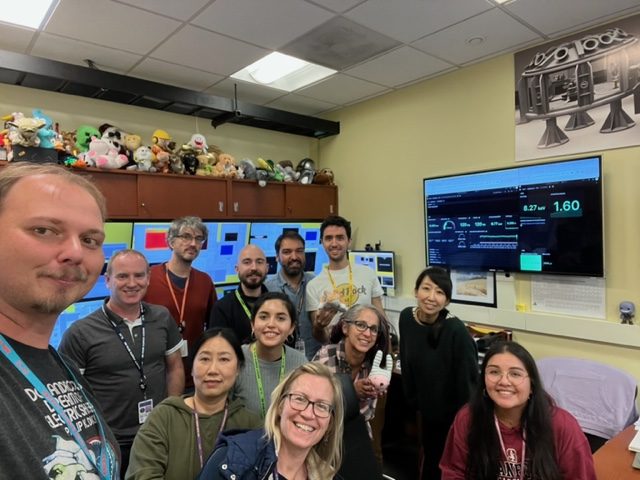Talbot X-ray interferometry experiment at LCLS
In November 2023, the University of Valladolid participated in its first experiment in the Linac Coherent Light Source (LCLS) at the Stanford Laboratory for Accelerator Physics (SLAC, California, USA), through members of our group.
LCLS is a type of light source known as a Free Electron Laser (FEL). It works by accelerating electrons to velocities close to the speed of light along a 3.2 km long linear accelerator. Once the electrons have reached these high velocities, they get deflected by a succession of magnets, making them oscillate and therefore emit coherent X-ray radiation. These X-ray pulses are extremely bright, highly energetic – photon energies up to ~10 keV, or wavelengths down to ~1 Å – and with a duration on the timescale of femtoseconds (10-15 s).
This bright, fast, energetic and coherent radiation allows us, for example, to probe the interior of atoms and the mechanisms for absorption or emission of photons; or to obtain high-contrast images of plasmas in extremely dense conditions, that would be opaque to visible light. This particular application was the object of our recent experiment, led by M. P. Valdivia, from the University of California San Diego (UCSD), and including members from a large international collaboration. In it, we used a technique known as Talbot interferometry to obtain phase-contrast images of shock compression waves sent through different materials, to investigate the different mechanisms involving shock generation in plasmas at high densities (higher than solid density).
This is the first time that the University of Valladolid has participated in an experiment at SLAC, which has been made possible by the international collaborations developed by the members of our research group, and has been supported by and the Spanish Ministerio de Ciencia e Innovación (Research grant No. PID2019-108764RB-I00).
